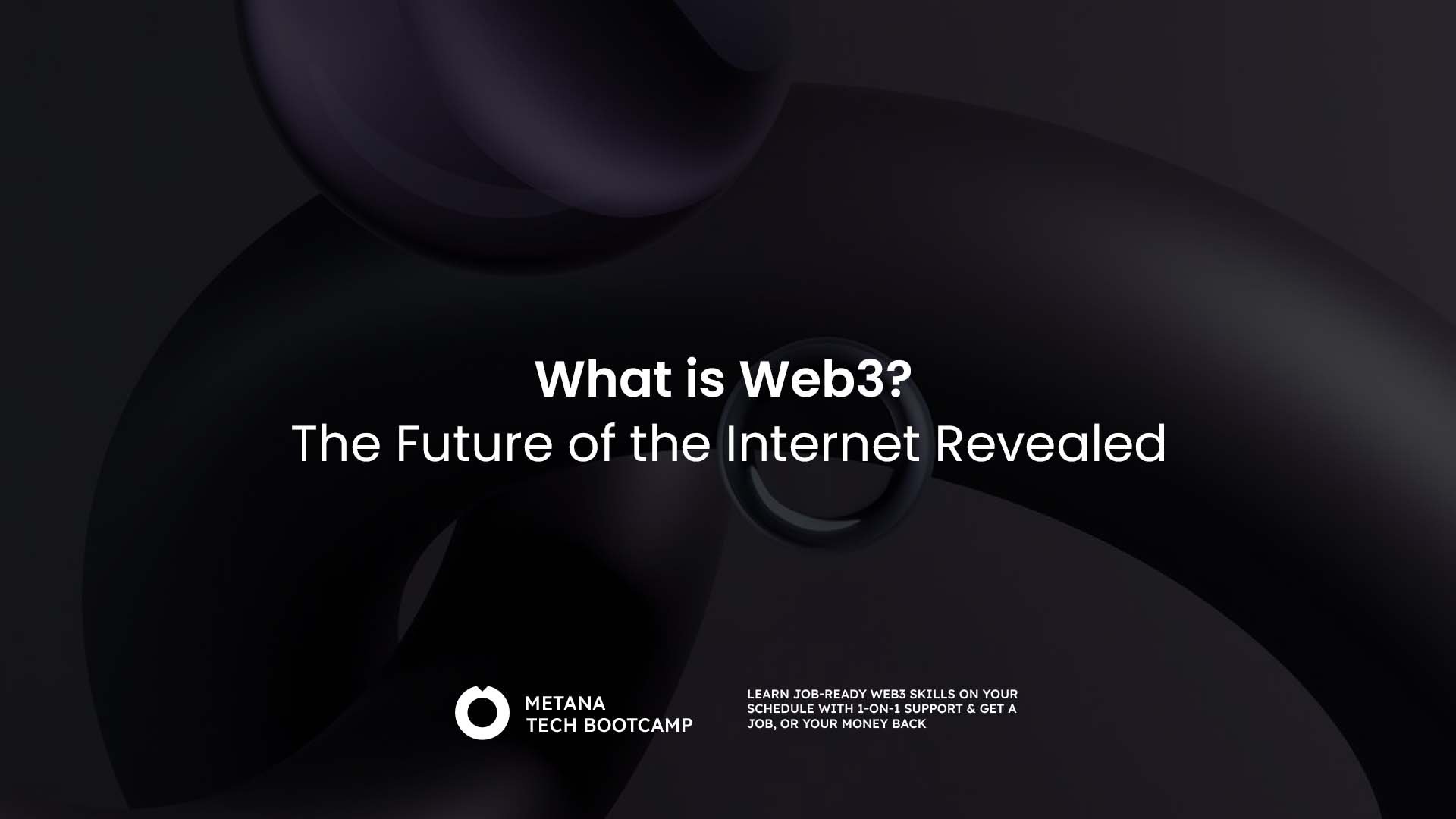TL;DR:
Web3 is the next evolution of the internet, transitioning from centralized control to decentralized ownership powered by blockchain.
Comparison with previous internet versions:
- Web1: Static, read-only websites.
- Web2: Interactive and social but dominated by centralized platforms controlling user data.
- Web3: Empowers users with control over their data, digital assets, and online interactions through blockchain technology.
Impact across industries:
- Finance (DeFi): Decentralized finance removing intermediaries.
- Gaming (NFTs): True ownership of in-game assets.
Challenges: Regulatory uncertainty and mainstream adoption barriers.
Future integration: Web3’s combination with AI and the metaverse signals a digital landscape where individuals truly own their online presence.
The internet has come a long way from its early days, evolving into a necessary part of daily life. From static web pages to the dynamic, user-driven platforms of today, the digital landscape has transformed dramatically. A new era has emerged for the internet. But what is Web3, and how does it differ from previous versions?
Understanding Web1 – Web2 – Web 3
To fully understand this, we must examine the evolution of the internet from web1 to web2 and web3.
Web1: The Read-Only Era
Web1, also known as the “read-only” web, existed between the early 1990s and early 2000s. Websites were static, offering little interaction.
Users could consume content but had no way to contribute. Imagine browsing a digital dictionary without the ability to comment, share, or engage, just a one way communication.
Web2: The Social, Interactive Web
Web2 introduced a level of engagement. Social media platforms like Facebook, Twitter, and YouTube transformed the way people interacted online. The internet became a two-way communication channel, allowing users to create content, connect, and share. However, Web2 also meant data centralized.

Large corporations like Google and Meta controlled vast amounts of user data, raising concerns about privacy and security.
Web3: Decentralized and Ownership
Today Web3 is redefining the internet again. Unlike other webs that central authorities dominate, it operates on blockchain technology and remains decentralized.
Let’s say like this; You have power over your digital world. It gives you authority to own, control your data and finances. You do not have to depend on any institute or third party.
This means users have greater control over their data, digital assets, and online identities. Instead of relying on corporations, transactions and interactions occur peer-to-peer. The goal of this is a more secure, user-driven internet.
How Web3 Differs from Previous Web Versions
In contrast, Web3 uses blockchain technology. This makes it more transparent and secure. The key differences include:
- Ownership: Users own their data, whereas Web2 platforms monetize user-generated content.
- Security: Blockchain technology reduces the risk of data breaches and cyber-attacks.
- Decentralization: Instead of centralized platforms, the applications run on distributed networks, giving power back to users.
The Evolution of Web3 So Far
Still in its infancy, the technology has already made waves across industries. Smart contracts, decentralized finance (DeFi), and non-fungible tokens (NFTs) are changing our understanding of transactions.
They are also changing how we think about ownership. Companies like Binance are leading the way in integrating Web3 into mainstream finance.
The Promise and Odyssey of Web3
It promises a digital landscape free from corporate monopolies, where users have full control over their digital presence.
The road ahead isn’t without challenges. User acceptance, changes in technology, and regulatory concerns continue to be major obstacles. However, as more developers and companies invest in Web3 technology, its potential continues to grow.
The Future is Web3
The evolution of web3 is happening rapidly, integrating with AI, the metaverse, and decentralized identity solutions. Innovations in blockchain gaming showcase how Web3 is transforming industries beyond finance.
As we answer “What is Web3” in 2025, the digital world is moving towards evolution, and changing towards decentralization. Web3 will change how we interact online.
Whether it’s securing transactions, empowering creators, or revolutionizing digital ownership, Web3 is the next frontier. The internet is no longer solely for content consumption. A space is becoming where people own their digital lives.
FAQs
What is Web3 used for?
- Web3 is used for decentralised applications (dApps), smart contracts, NFTs, and blockchain-based finance (DeFi). It allows users to control their data, trade digital assets, and interact without middlemen.
What is Web3 for beginners?
- Web3 is the next evolution of the internet, powered by blockchain. Instead of relying on big tech companies, users have control over their data, identity, and transactions.
What is an example of a Web3 application?
- DeFi platforms like Uniswap for trading crypto without banks
- Web3 wallets like MetaMask for secure transactions
- Blockchain gaming where players own in-game assets
- NFT marketplaces like OpenSea for buying and selling digital art
How to make money with Web3?
- Develop smart contracts for businesses
- Invest in crypto (Bitcoin, Ethereum, etc.)
- Stake crypto to earn rewards
- Trade NFTs on platforms like OpenSea
- Play-to-earn games that reward users with crypto








